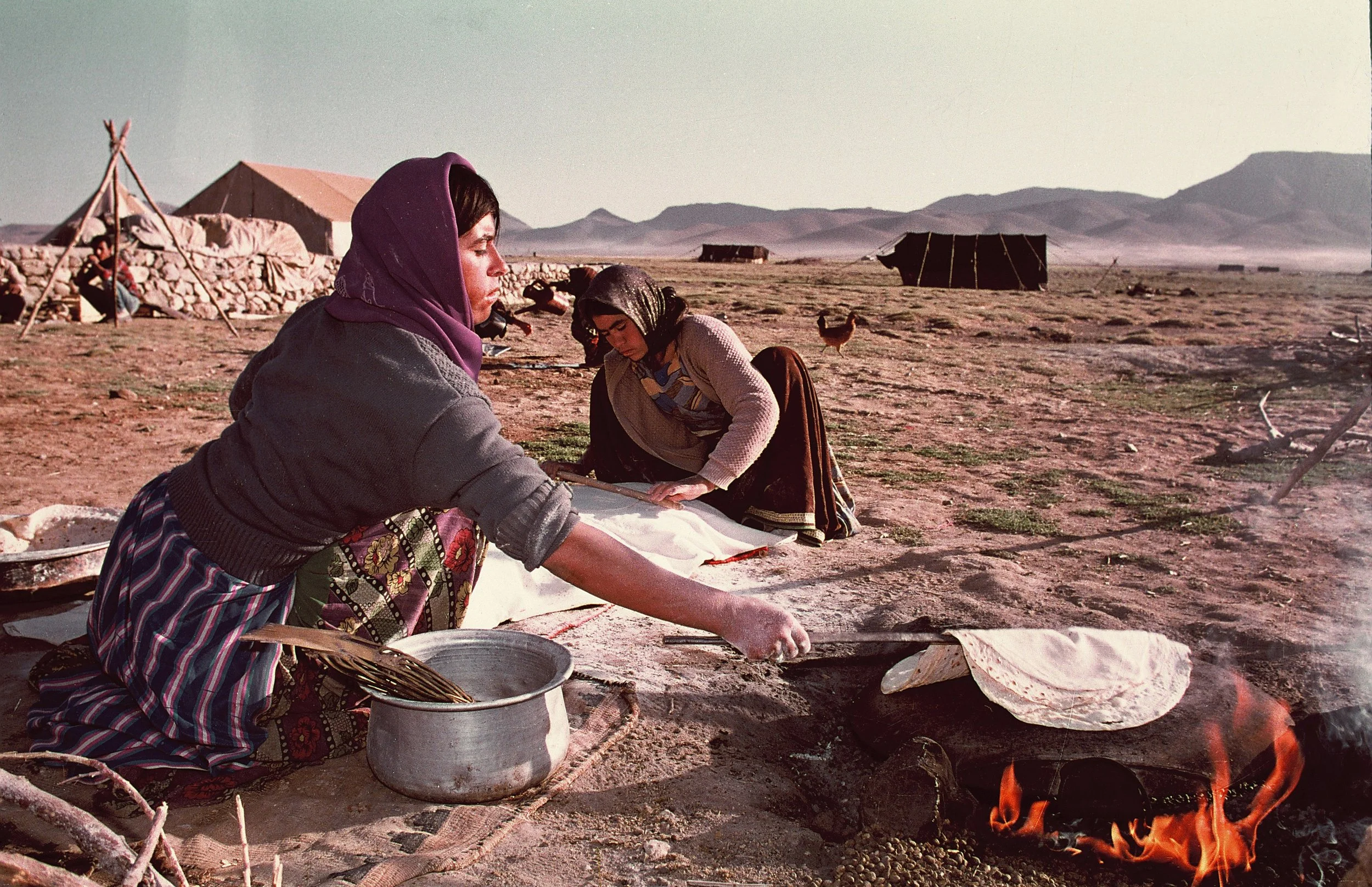Laleh Sherkat, Photographing Iran: 1984-1993
Craigmillar Now, 30th May - 29th June,
Open Wednesday - Sunday, 11am - 4pm
Laleh Sherkat (b. 1963) is an Iranian photographer living in Craigmillar.
This exhibition presents a selection of Laleh’s early work, taken during her studies at The University of Tehran and shortly after graduating.
The photographs focus on the lives of women in Iran during the politically turbulent period that followed the Islamic Revolution in 1979. There are six series of work in the show; ‘Women in Prison,’ (1984); ‘Women at Work,’ taken in factories across Tehran between 1984-1988; ‘Morgue Workers,’ (1993); ‘Bandari Women’, (1993) and ‘Nomad Women’, (1988). There is also a selection of work taken during the last few months of the Iran-Iraq war in 1988.
These photographs have never been exhibited in the UK and offer audiences a rare glimpse into the life of women in Iran during the 1980s and early 90s.
Curated by Rachael Cloughton.
“ ‘I faced restrictions that my male counterparts did not, but I sought to transcend these limitations and enrich my personal and artistic experience. I have always been deeply committed to documenting the realities of women’s lives and amplifying their voices—an enduring concern that lies at the heart of these bodies of work.’”
Prisoners, 1984
The photographs from this series were taken by Laleh for her first professional assignment; a commission from the Iranian women’s magazine called Zan-Rooz Magazine (Today’s Woman). Laleh was only 21 years old at the time, and in her first year of studying photography at the University of Tehran.
She had just one hour to take photographs for the feature, which was focused on the stories of women in Tehran’s Qasr (Palace) Prison.
The Prison visit was pivotal for Laleh’s practice. She describes it as ‘the first time I started photographing women and children in a serious way.’
Women at Work, 1987-1988
The photos in Women at Work were taken for Laleh’s undergraduate thesis, and capture women working in five different factories in southern Tehran and its outskirts. There are over 100 photographs in this series.
Laleh would arrive at the factories around 5am, just as women were arriving for their shift. The factories were often dark, crowded and noisy, and the work repetitive and strenuous. Women were paid less than their male peers for the same roles.
Laleh wanted to bring attention to the poor working conditions and injustice that the women workers faced through this body of work, as well as the women’s resilience, and the friendships and support they showed one another.
Bandari Women, 1993
The people in Hormozagan province on Iran’s southern coast are known as Bandari (Port People). Once an important stop on the Spice Route, the area has been a centre of maritime trade since around 2000 BC, resulting in a rich blend of ethnicities and cultures, including African, Arab, Indian, and Persian influences.
Laleh’s photographs capture Bandari women, who have been wearing traditional face masks for centuries. The precise origin of this custom is uncertain. Some local oral traditions suggest that the masks were originally adopted during the Portuguese occupation of the southern coast in the 16th and 17th centuries, to help protect women from being recognised or targeted by foreign soldiers. However, most scholars consider the masks primarily a cultural and practical tradition, linked to modesty, identity, and protection from the sun and wind. The design and colour of each mask signifies a woman’s village, social status, or marital status.
(Source: BBC)
The Morgue Workers, 1994
In the Morgue Workers series Laleh captures the Muslim ritual cleansing of the body of the deceased before burial, known as Ghusl Mayyit. Men wash male bodies, and women wash female bodies. In Iran, this ritual is often carried out by professional body washers, observed by relatives. Despite the sacristy of the ritual, the workers have a very low status in Iran.
Laleh was commissioned by ZANAN (Women) magazine to photograph the morgue. The photographs focus on the women workers and the care and dignity they show each body.
Date Trees, 1988
These photographs were taken during the final months of the Iran-Iraq War (1980-1988) and are part of a broader series of work by Laleh captured during a visit to Khorramshahr, Abadan, and Hoveyzeh. These areas were considered active war zones at the time, and access for women was heavily restricted. Despite these limitations, Laleh documented the traces of war, approaching it from a distinct and deeply personal perspective.
Some of the most poignant images Laleh captured are of date trees; struck during the fighting, they fold and collapse like fallen soldiers.
Nomad Women, 1984
This series of photographs were commissioned by the Iranian women’s magazine Zan-Rooz (Today’s Woman). They capture the Nomadic Qashqai tribe, who move through the semi mountainous terrain of the southern Zagros in southwest Iran.
This series focuses on the daily lives of women in the tribe and their central role as caretakers for their community.







